The sky was gloomy — a light drizzle fell upon the grass and nearby pavement, leaving a moist glaze I knew we’d have to drive through as we began our jaunt toward the mountains. I could easily imagine I was standing in a meadow along some backroad in the U.K. Even one of my English colleagues said it felt like home. The setting, however, was southern Utah and the dreary sky didn’t last long as we began a meandering two-day journey in the all-new Land Rover Discovery.
Land Rover launched the Discovery model over 28 years ago. This vehicle was hugely instrumental in establishing the luxury SUV market in the United States. Its iconic boxy shape saw four iterations over the subsequent 27 years with measurable upgrades to suspension, functionality and comfort along the way. When I was handed the keys and turned towards the vehicle, the first thing I noticed was the departure from the iconic boxiness of its predecessor. Admittedly, it took a while to get used to the Discovery’s complete redesign though it didn’t take long for me to succumb to its allure. Once inside, I was captivated by the deceptively roomy and incredibly comfortable interior.
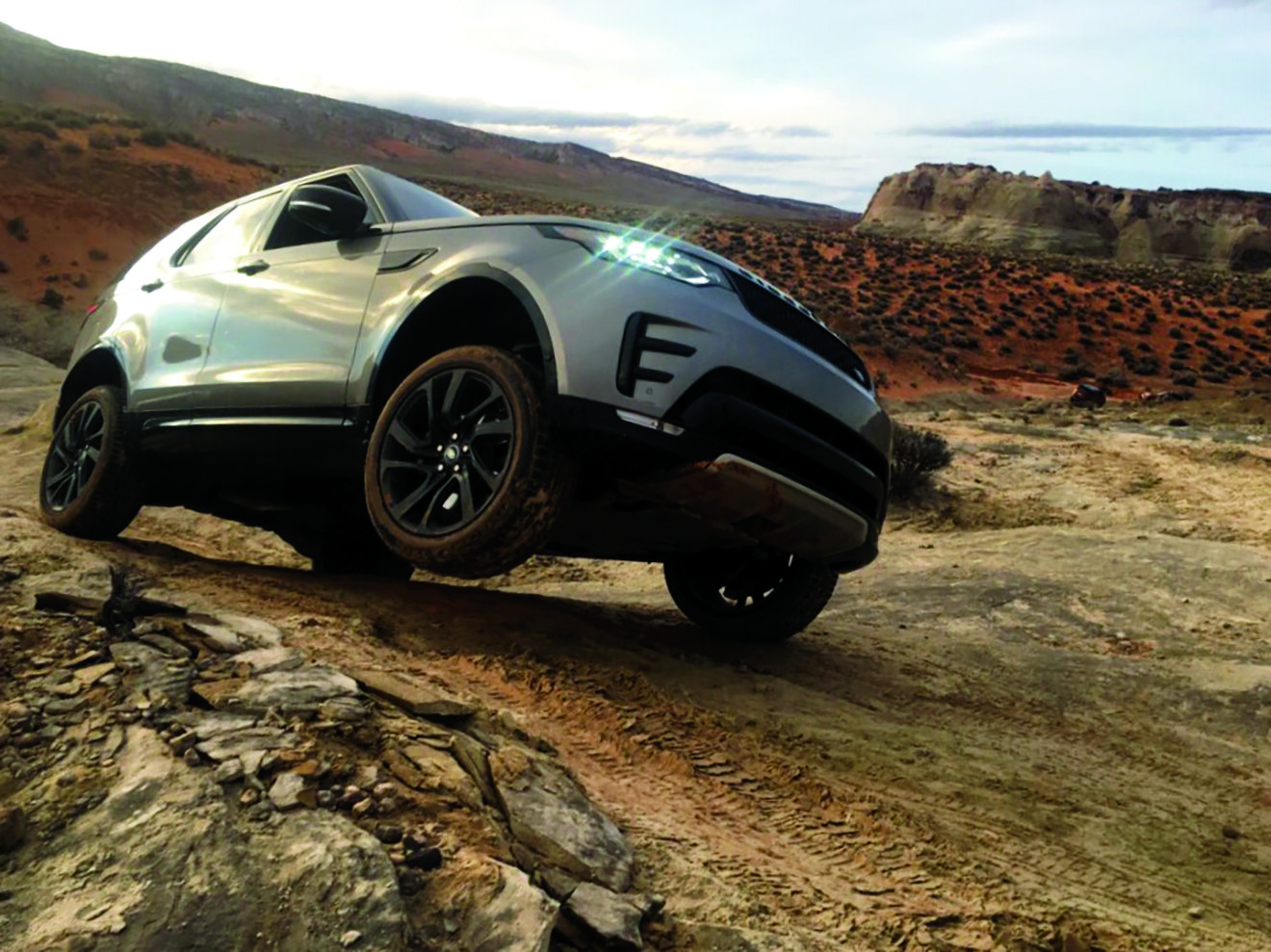
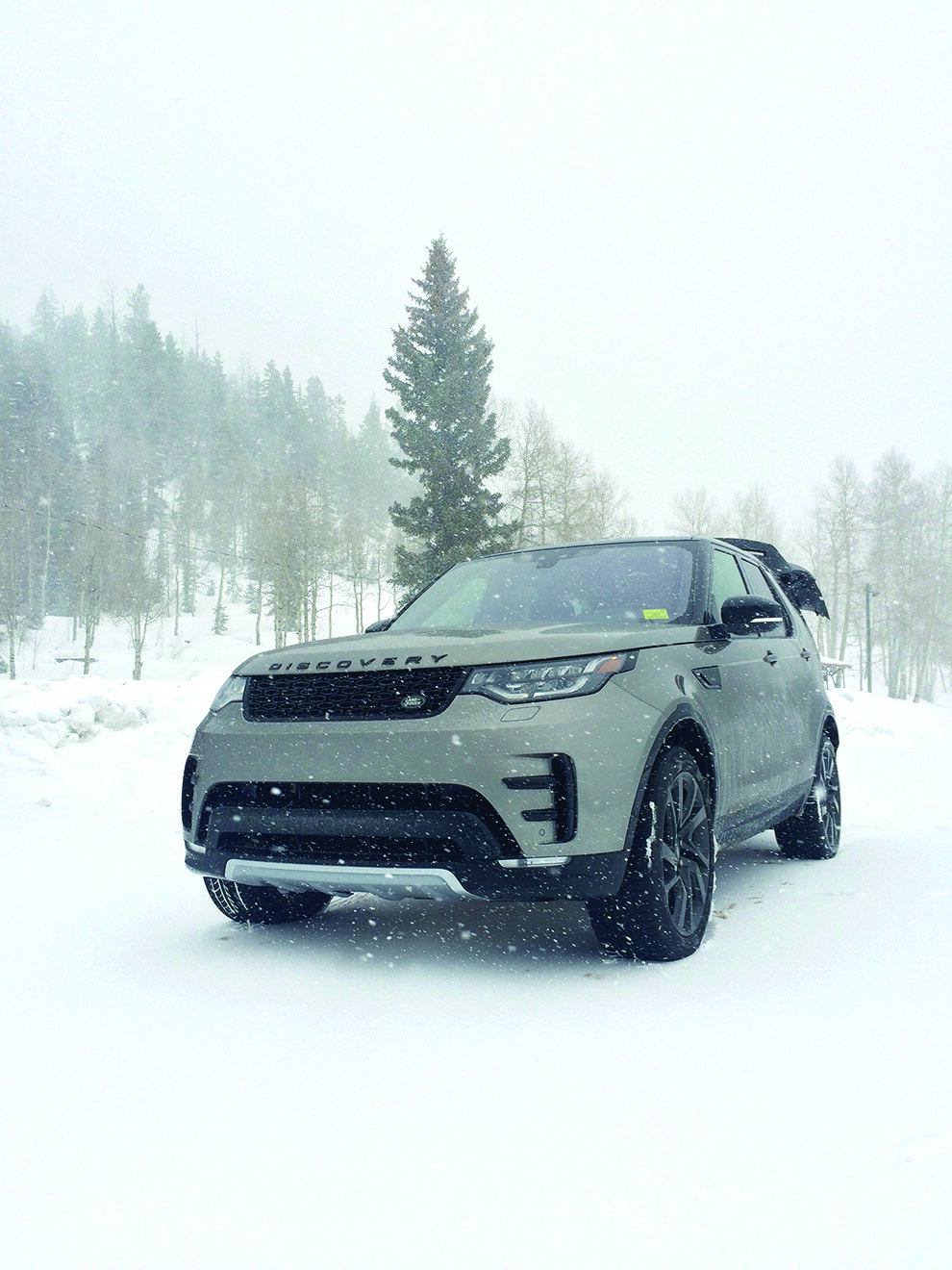
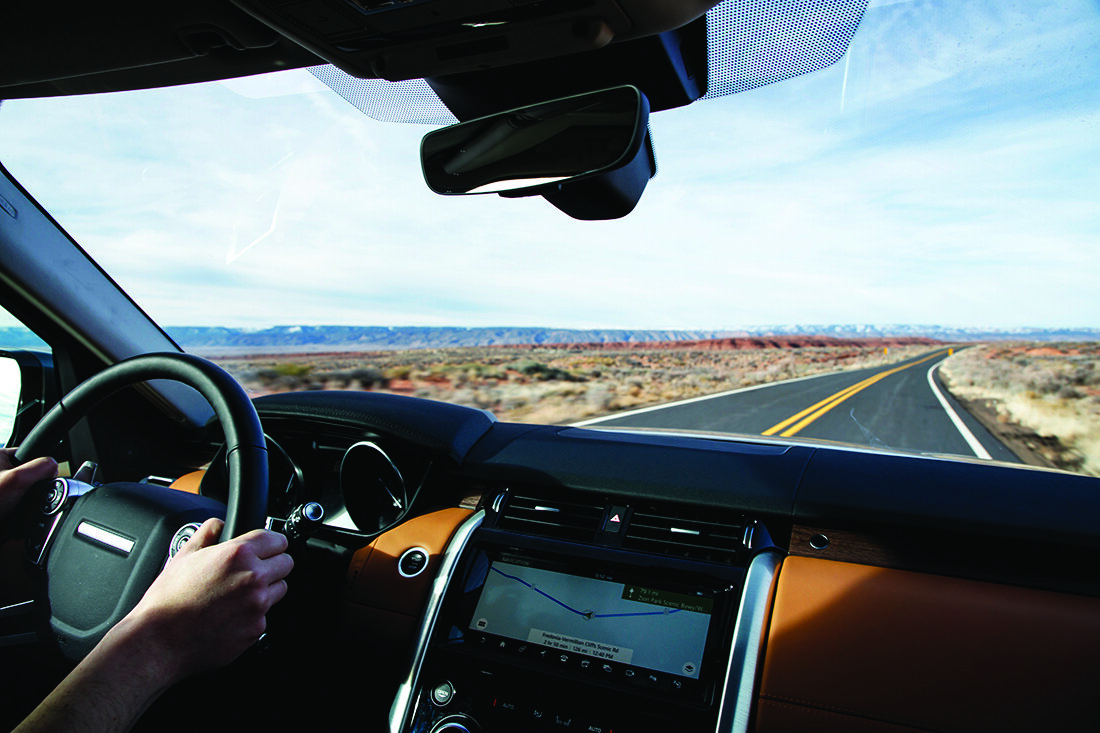
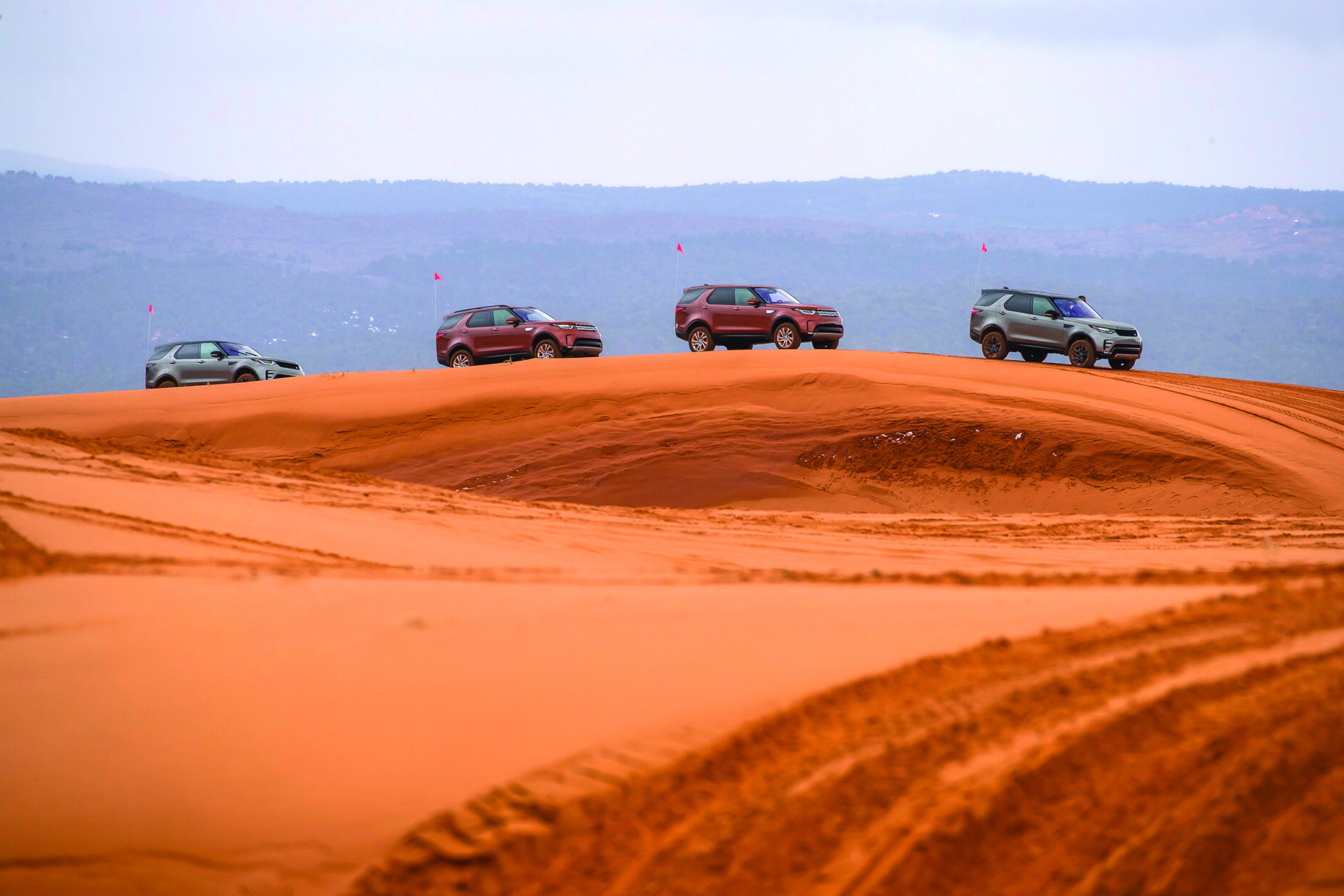
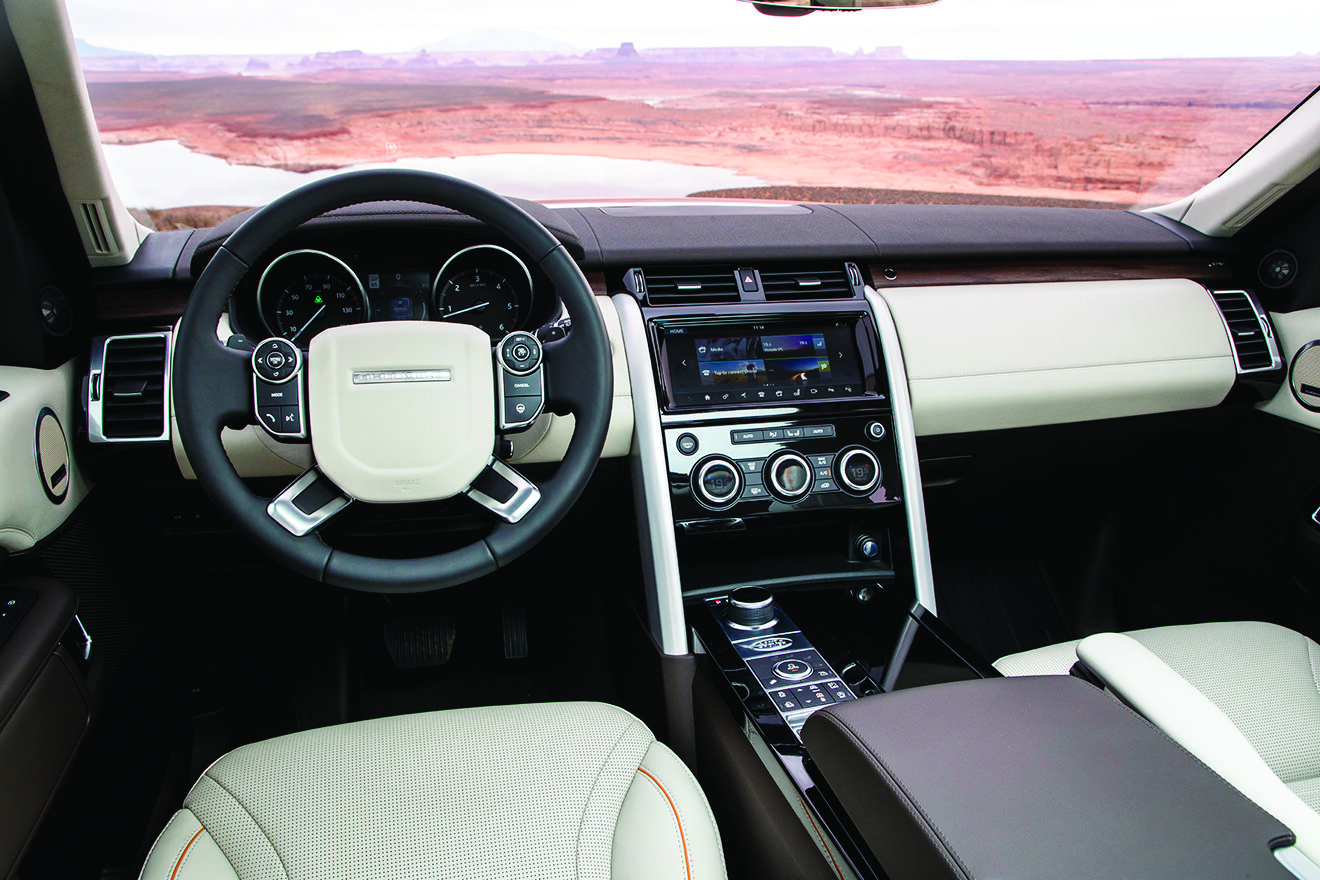
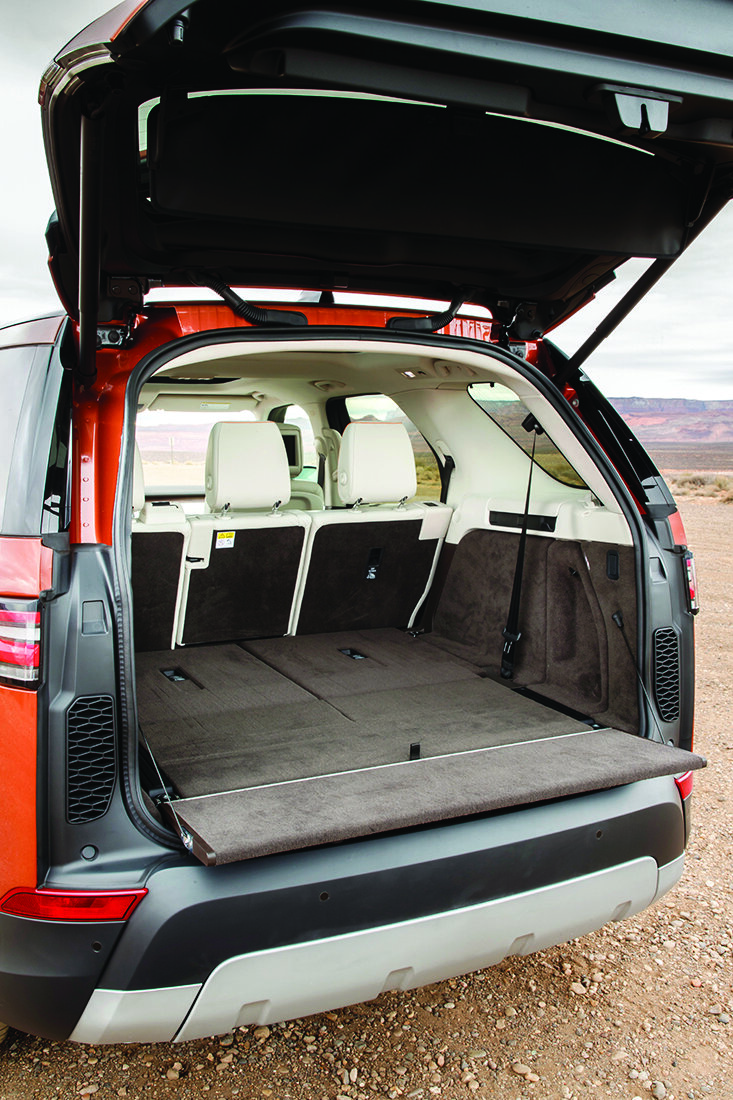
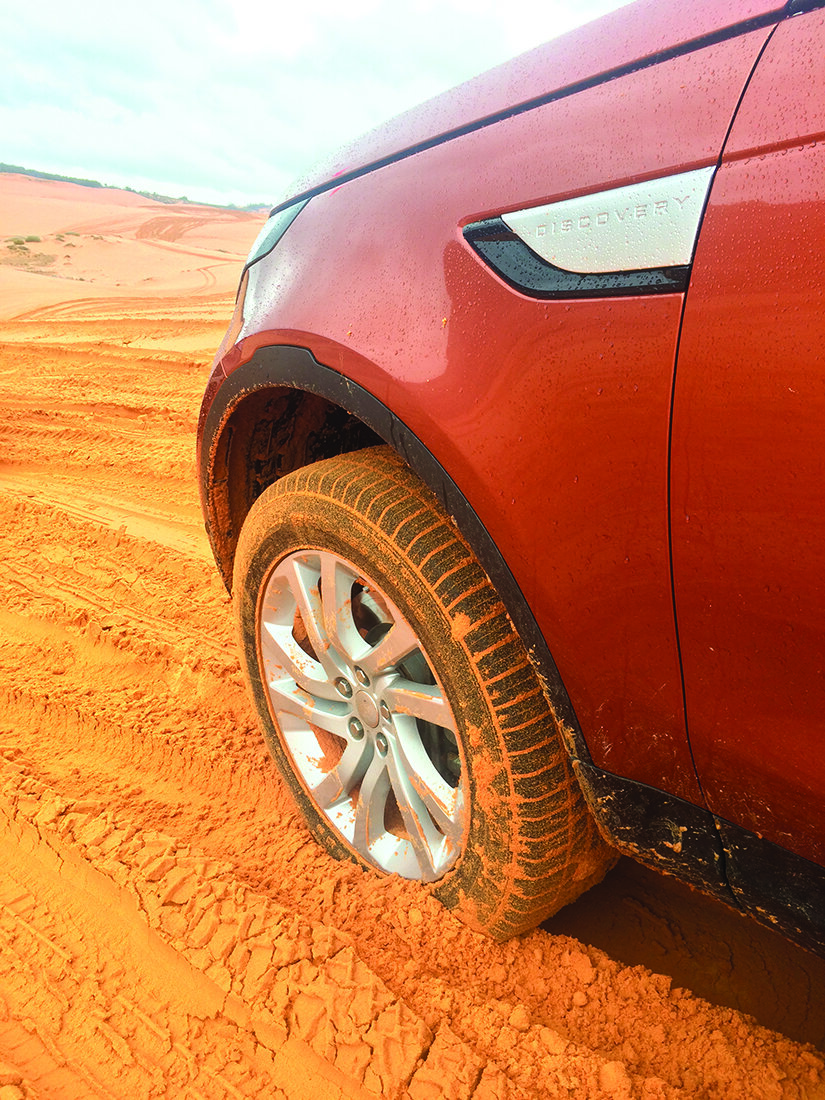
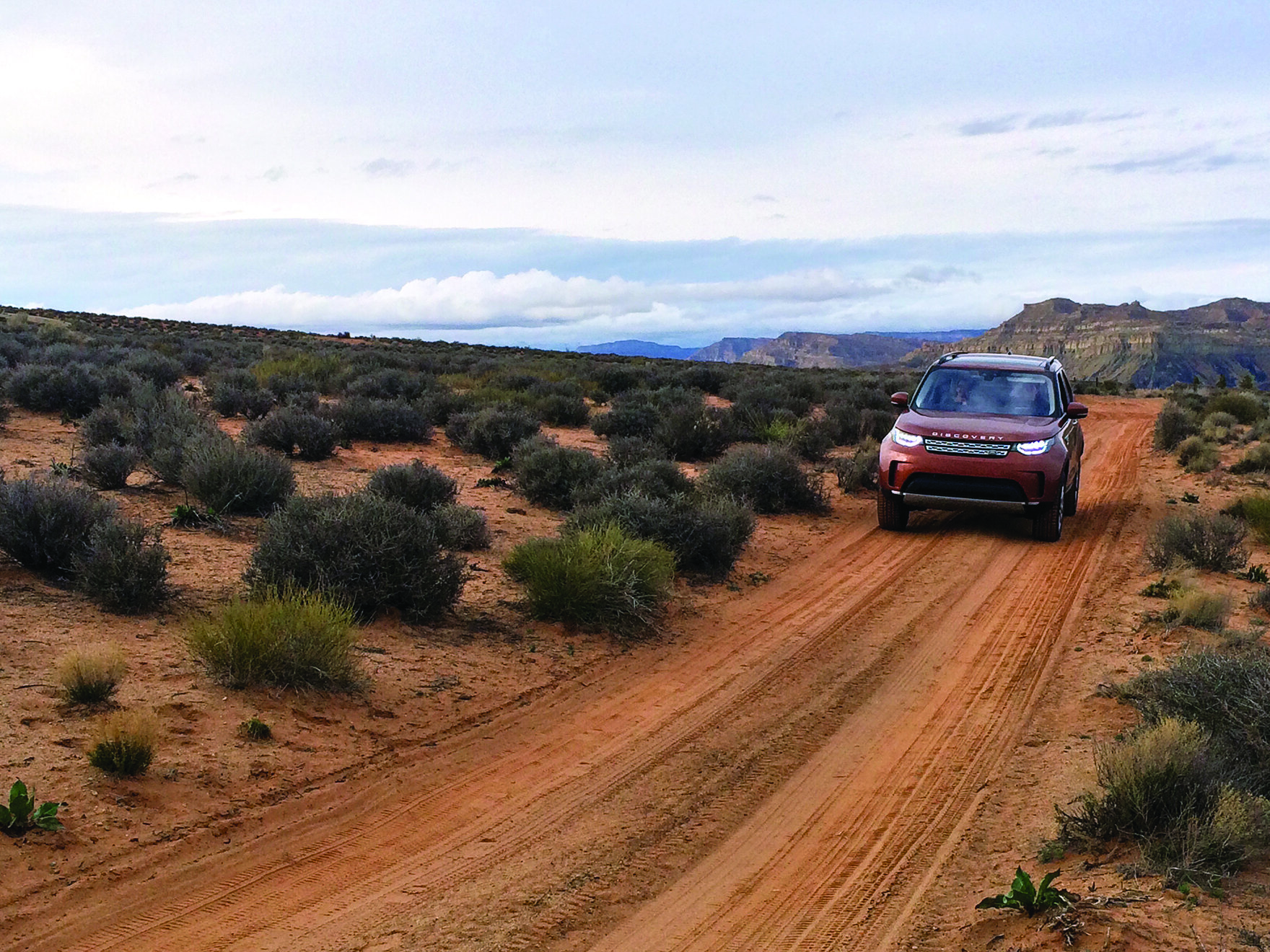
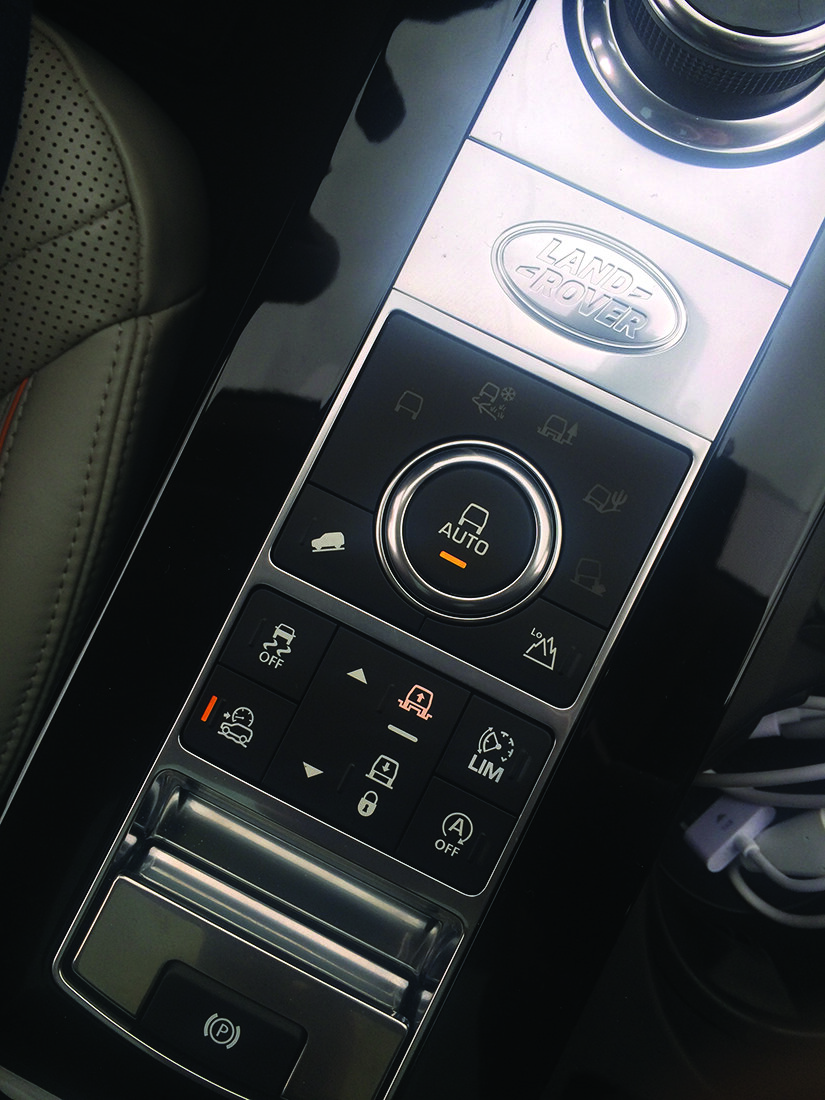
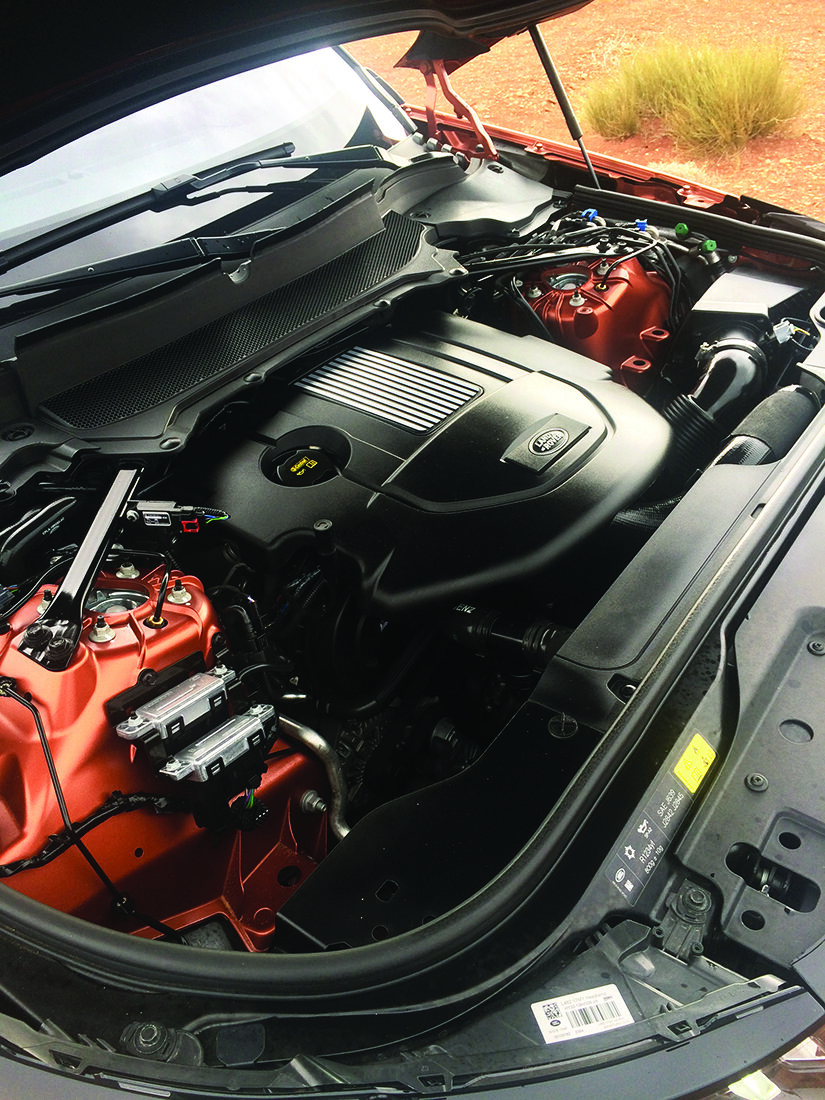
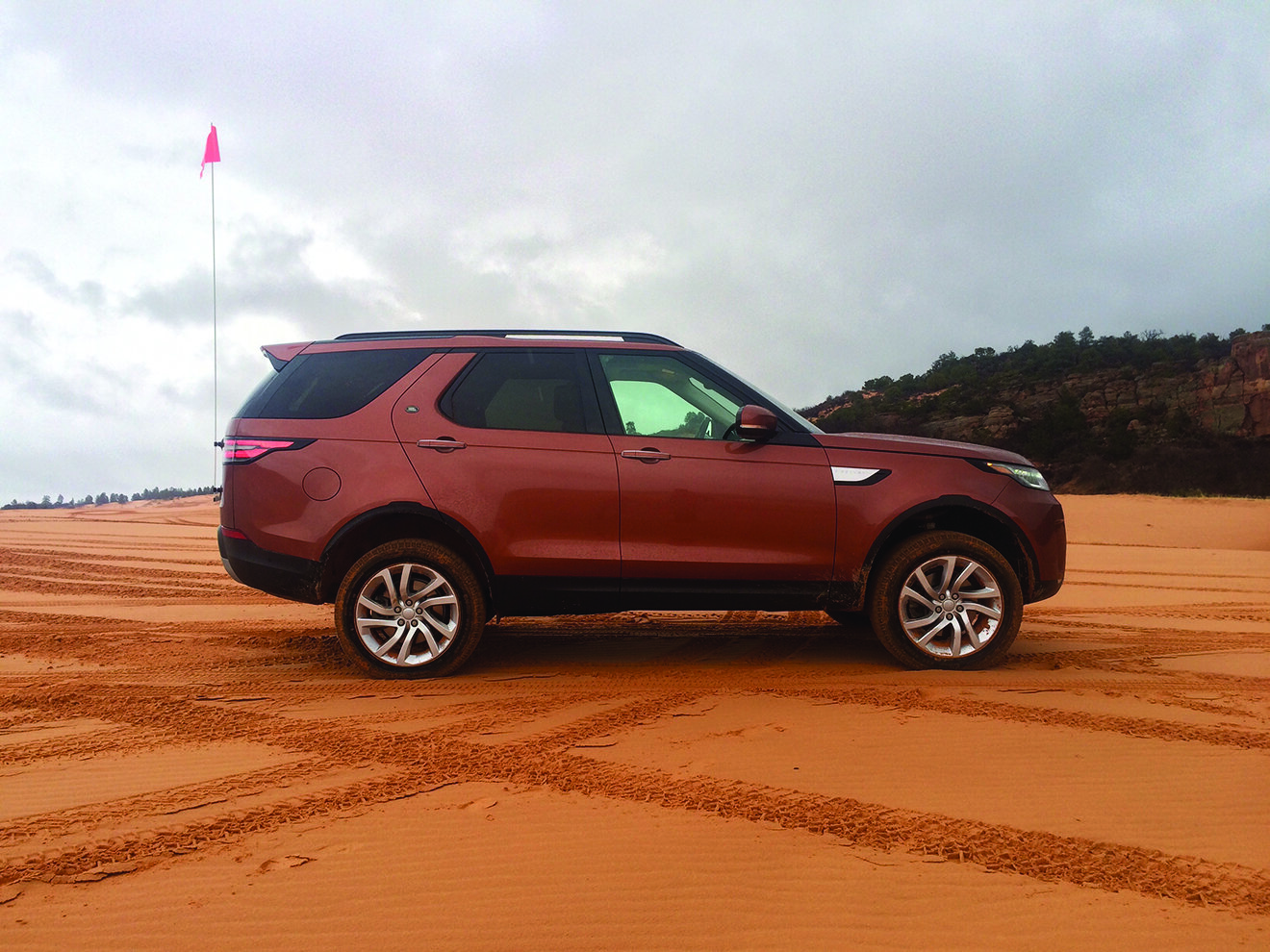
While loading our gear, we were introduced to the zealous tailgate. The main talgate is a one-piece set-up that opens and closes at the push of a button or a swipe of your foot underneath the rear bumper. Somewhat resembling a sixties era refrigerator door, the large tailgate not only allows easy access but provides shelter from the elements when raised. A short, inner tailgate lowers and raises from a nearby control panel, further easing access for gear or pets, and it’s a nice place to sit when changing boots. It also prevents the classic scenario of slamming the door shut on something crushable. Although it too suffers a little in the esthetics department, with a 600 lb load capacity, it does make a handy barrier or shelf. The control panel also features buttons to operate the second and third row seats, enlarging the cargo space to a generous 88.3 cubic feet when the seats are folded downwards. All functions can be replicated from a phone app too, a plus for those who enjoy controlling their world from the palm of their hand.
I was joined for the test drive by respected auto journalist Harry Wagner. We hopped into our 3-liter supercharged, gas-powered Discovery and left the starting point in St. George, Utah with 340 horses to unleash across the mountains and deserts of Utah. We had no idea the myriad of conditions we would encounter en route to Zion National Park and to our day’s ultimate destination, Canyon Point.
In 11 years of vehicle tests, the 2017 Discovery is the first one I’ve been fortunate enough to try out in such a wide variety of terrains and conditions over such a brief time. As we left St. George, working our way north toward the mountains, the gloomy sky and light drizzle turned to snow and a near complete white-out. We were in a blizzard at altitude, with temperatures dropping by approximately 30°F. For an hour, our entourage navigated through sleet and eventually thick powder. The Discovery’s Terrain Response 2 System performed flawlessly. We made our way along a two-lane mountain pass, stopping at one point to watch as one of our fellow auto journalist helped the driver of an 18-wheeler, which had become stuck along the embankment. Their Discovery was armed with a Warn winch, which made quick work getting the truck clear and allowing the backed up traffic to pass. It was quite an impressive sight to see the ultra modern little Discovery extract an 18-wheeler from such a predicament.
As our journey continued, I began to take notice of the well-appointed interior. Our test vehicle was outfitted with premium Windsor leather seats and natural oak veneers, providing the luxurious ambiance one would expect from Land Rover. The dash display was intuitive, with a gauge cluster complementary of the rest of the vehicle’s detail. All seven seats were comfortable for average-sized passengers and the overall layout was very pleasing. Land Rover has heeded the desire of its core demographic by integrating a variety of technology functions. Nine USB ports and six 12V power outlets are spread throughout the vehicle a 3G WiFi hotspot is built in. Even the hard core overlanding purist should appreciate the amenities, although some might miss the Spartan environment of their old “88” or “110.”
As we completed our journey through the mountains, eventually descending towards Zion National Park, Harry relinquished the steering wheel and I took over. Now behind the wheel, I spied the readout and noticed the above-average fuel economy thus far achieved. It was significantly better than most gasoline-powered vehicles I was accustomed to driving off road. Two powertrain options are available in North America: a 340 HP supercharged gasoline 3.0 liter V6 with an impressive 332 lb./ft. of torque, and a turbocharged diesel dubbed the Td6 with 254 hp, and a whopping 443 lb./ft. of torque. Our gasoline-powered “Disco” had consistently achieved approximately 22 mpg and on Day Two, our Td6 version (also a 3.0 liter V6) registered about 26 mpg. As part of the vehicle’s complete design overhaul, Land Rover’s engineers built the Discovery as a unibody structure, incorporating the frame into the shell, rather than employing the old body on frame platform. 85% of the body is aluminum, 43% of which came from recycled material. Magnesium is used as well in the front end. The design and lighter-weight materials has resulted in a weight savings of nearly 1,000 lb., greatly improving ride quality and fuel economy over its predecessor.
After lunch, we continued along slick pavement until we arrived near Canyon Point. There, we dropped the vehicle into 4-low and traipsed off-pavement for approximately 10 miles to a short but challenging section of rock and mud. The Terrain Response 2 System makes driving the vehicle in any condition easy for even the least experienced off-road driver. It automatically monitors driving conditions and adjusts throttle sensitivity, ride height as well as gear change characteristics, with settings for rock, snow, mud, sand, and provides a selectable low-range. Height adjustment comes from the vehicle’s air bag suspension. Even with large 21” wheels sitting on low profile Goodyear Eagle F1 All-Terrain tires, the Discovery easily crawled up and over large boulders splayed over loose scree and thick mud. Another feature, the All-Terrain Progress Control, which is essentially an off-road cruise control, keeps the speed minimal but consistent so the system can appropriately distribute torque to each wheel. Harry and I were skeptical until we actually used the system, but after completing this challenging section we were both impressed by how easily the new Disco crawled along without our input.
The next morning we left Canyon Point in the Turbo Diesel version of the Discovery. Land Rover’s Td6 powertrain, simply stated, is awesome! Even under full throttle the engine sounds less like a diesel and more like a throaty gasoline engine. At highway speeds it hums along, oblivious to the fact it’s a diesel and acting more like its gasoline-powered twin. We stopped at Coral Pink Sand Dunes State Park to test the vehicle in extreme sand conditions. A beautiful place to visit, this was also the perfect setting to test the Terrain Response 2 System’s sand mode. It was pure delight to rev through sand hills, traveling up and down and side to side like we were in a dune buggy. This was easily my favorite part of the trip and the Discovery ate up Utah’s sand dunes as if they were child’s play.
The 2017 Land Rover Discovery, despite its departure from the boxy safari look of old, is without a doubt a significant improvement in appearance, comfort and capability. It’s a Land Rover so you’ll pay for the luxury, with pricing starting at $49k and hovering closer to $60-65k equipped similar to our test vehicles. At a $2,000 premium, the Td-6 diesel option is for me, a no-brainer. It is more fuel efficient and has gobs of torque, perfect for towing or off road driving. But the gasoline engine is a powerhouse and about a second quicker from 0-62 mph, so pick what suits your taste…and smell.
Land Rover’s newest Discovery is above and beyond what I had expected when the vehicle was announced in the fall of 2016. While the price tag will be prohibitive for some, and the level of amenities may be over the top for a few, the integrated technologies, engineering, comfort, and performance both on and off road have me convinced that Land Rover has created an amazing platform for luxury adventure.
This article was awarded an Excellence in Craft award by the Texas Auto Writers Association for Magazine Writing in 2017.
